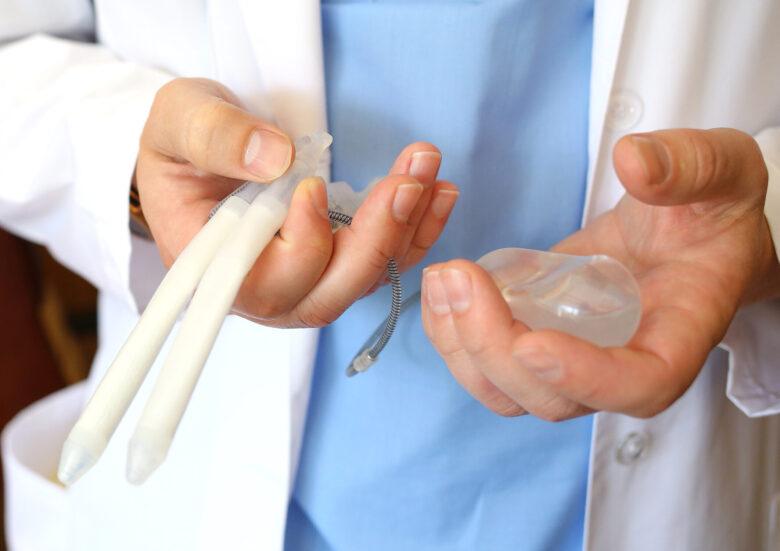Home › Health › Surgery
Younger Men's Impotence and Penile Prosthesis Surgery Causes
Published on:
Impotence is a common ailment among men, and there are numerous disorders and circumstances that can lead to it, especially in early age. Impotence, also referred to as erectile dysfunction, is characterized by the inability to achieve or maintain an adequate erection for sexual activity. Physical and psychological factors are the two primary categories under which the reasons of impotence in young men are addressed. Heart disease, diabetes, obesity, and hormonal imbalances are examples of physical causes of erectile dysfunction. Atherosclerosis, often known as blood vessel obstruction, can cause impotence. Patients who have hypertension may also experience it.
Young people may also experience erectile dysfunction as a result of rising prolactin levels or falling testosterone levels. Situations like depression and anxiety (anxiety) are among the psychological causes of impotence because they can delay the onset of sex desire.
Impotence can also be brought on by stress and issues with partner communication. Studies show that excessive alcohol and drug use, especially in young people, results in impotence.

Contents
What Are the Different Types of Penile Prosthesis?
Recent studies on erectile dysfunction were reviewed, and recommendations for treatment were included in the handbook created by the European Association of Urology. Although the guideline largely recommends medication therapy, penile injections, and suction devices for treating erectile dysfunction, these treatments only give you a momentary erection. For those who don't respond well to these treatments or who want a long-term fix, the penile prosthesis procedure suggested in the guide is also effective.
In this procedure, two prosthetic parts are surgically insert ed into the corpus cavernosum channels of the penis, which allow for erection when they have filled with blood. There are two types of penile implants: one-piece and three-piece, and they are a treatment option for many people who have impotence at an early age. Wide bending angles in one-piece prostheses and the inflatable penile prosthesis pump in three-piece prostheses both aid in the formation of an erection in the penis.
These prostheses are available in a variety of lengths and diameters to suit different anatomical needs, some of which have a hydrophilic coating.
How is a penile implant procedure carried out?
Contrary to popular assumption, the short-term surgical procedure varies depending on the type of prosthesis. While the surgery to implant a one-piece prosthesis typically takes 30 minutes, it takes an hour to implant a three-piece prosthesis. Before undergoing surgery, patients with erectile dysfunction issues should be examined by a skilled doctor.
The results of the examinations and tests are used to determine whether the patient is a good candidate for surgery to insert an inflatable or malleable penile prosthesis. Calculations are used to determine the best type of prosthesis for surgical patients. Prior to surgery, the root causes of impotence, particularly in young men, should be identified, and the best course of action should be chosen.
In this regard, a professional doctor's evaluation is necessary for patients who want to receive treatment. One-piece prosthesis are insert ed into the corpus canals during surgery through a little incision under the penis. Surgery for three-piece prostheses is a little more difficult because the fluid reservoir, which is implanted in the abdomen, the corpus canals, and the pump part of the prosthesis are all done separately.

Diabetes & Erectile Dysfunction
Sexual tablets are used to treat impotence in diabetic individuals with erectile dysfunction and to provide an erection before to sexual activity. Before sexual activity, certain medications, such Sildenafil, Tadalafil, and Verdenafil, boost blood flow to the penis. However, it is advised to use these medications with caution because diabetic patients may also have cardiovascular illnesses. Due to their potential to produce palpitations and tachycardia, these medications are not advised for those who have heart disease or chronic heart disease (increased heart rate).
Heart attack, an irregular heartbeat (arrhythmia), and sudden death from cardiac arrest are also uncommon medication side effects. The medications' active chemicals might cause adverse reactions such nausea, vomiting, allergies, and heart issues. Additionally, these medications only temporarily treat impotence when a sexual stimulation is present. For those who don't respond well to these medications, other short-term solutions are used, including as suction devices or penile injection therapy.
Patients with diabetes can use penile prostheses
Because of the adverse effects and potential for a heart attack, many impotence sufferers are reluctant to take medications. Patients with diabetes who suffer this disease and seek therapy from a urologist are advised against using sexual tablets as a treatment option. The European Association of Urology's guide on men's sexual health covers this topic in great detail. The manual advises penile prosthesis surgery when other options, such as medication therapy, penile injection, and vacuum devices, have failed. A pair of prosthetic components are typically implanted in the corpus cavernosum, which fills with blood and adds to the hardening, as part of prosthetic treatment.
This approach is used to treat erectile dysfunction permanently and has been used for many years in a safe manner. The treatment in question is also known as penile prosthesis among the public because the satisfaction rate is relatively high in those who have implants. When treating impotence, one-piece and three-piece prosthesis are typically preferred. Due to their flexibility, three-piece prostheses are used by pumping air into them, as opposed to one-piece prostheses, which are used by turning them into an upright position by hand.

Surgery on penile implants
Three-piece prostheses have cylindrical parts inside the corpus and a pump inside the testis. They also have a fluid reservoir inside the abdomen. Due to pump inflation, the liquid in the reservoir travels toward the cylinders since these components are connected by a certain tube system. This results in a hardening that has a natural appearance. Male diabetic patients can utilize one-piece prostheses, which are physically adjusted prior to sexual activity and help to generate an erection, as an alter-native to sex medications.
It is determined whether the patients are candidates for surgery as a result of the pre-operative examinations and testing. The controls choose the prosthesis' kind and size based on the user's requirements. Implantation of a three-piece denture typically takes an hour, compared to a 30-minute average for one-piece dentures. It is advised to postpone sexual activity for 4-6 or 8 weeks after surgery to prevent issues with treating penile prosthetics. People should adhere to the advice of the doctors and regularly use the prescribed treatment during this process. Post-operative controls are also crucial to the healing process.
Under certain circumstances, insurance will pay for a portion of the penile prosthesis treatment, one of the impotence treatment options. To find out more about these problems and to get more information about penile prostheses, please fill out the "Contact us" form on the website. You can speak with a urologist who specializes in your condition for more information about the causes of impotence and erectile dysfunction in young men.
Share With Your Friends